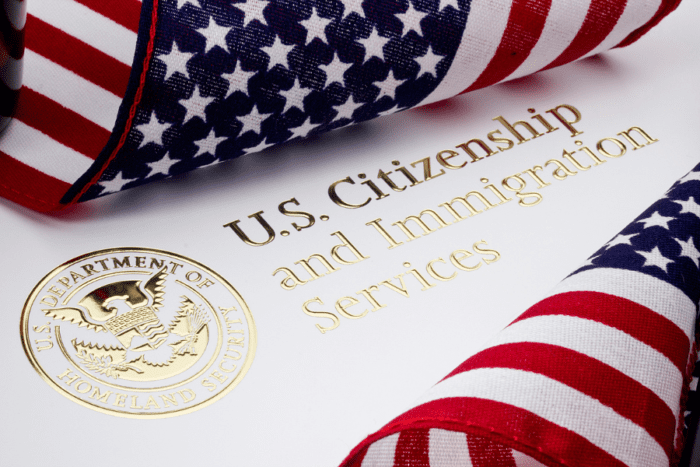Will I still Be Able to Travel to the US without any Immigration Issues?
May 22, 2025
The US is one of the most prominent travel destinations on the planet, but will a Trump administration mean stricter border controls for visitors?
Trump’s pledge to tighten up border controls to prevent illegal immigrants from entering the US was a central plank of his re-election campaign.
Within days of entering office, his administration publicly reiterated his pledge to hold mass deportations of millions of undocumented persons from the US.
What a Trump White House will mean for US travel visas remains to be seen.
His ‘America First’ approach could incentivise people and entities to return to the United States. Certainly, it’s going to mean heightened security at all US borders and stricter requirements for some to enter.
With tourist visas for the US harder to obtain than for many other countries, acquiring and retaining a US visitor visa has always been discretionary.
So, will those discretionary powers be extended to prevent certain people and nationalities from entering the US?
What to Expect From Trump’s Immigration Policy
With an aggressive agenda for US immigration, we can expect significant change in some key areas.
The precise nature of this reform has yet to be decided at the time of writing. However, Trump has signalled that he will carry out the most extensive deportation campaign in US history.
This is likely to include mass deportations of individuals with a criminal record who have been released into the US under the Biden administration and those who crossed over into the US recently.
The new administration also plans to immediately pursue individuals who have a removal order in the US but have not yet left the country. Over 1 million individuals in the US today have a removal order.
It remains to be seen if mass deportations are realistic as they will be challenging to carry out from a legal and constitutional viewpoint.
Trump’s plans are set to create more detention camps to house individuals who they plan to round up for deportation.
The catch-and-release policy favoured by the Biden administration is set to end. This saw individuals who tried to cross into the US illegally detained for a short period before being released on US soil to take their case before an immigration judge.
Under Trump, if someone is caught at the border, they will immediately be sent back home. It is also likely that the policy of remaining in Mexico to prevent migrants from asking for asylum at the US border will be reinstated.
If you’re crossing into the US through a third country, like Mexico, the new Trump administration will require that you stop there and seek asylum rather than coming to the US border and seeking asylum.
Trump’s immigration plans could also see the end of birthright citizenship via an executive order. Trump has talked about how, under current arrangements, having a baby in the US with the incentive of parents claiming citizenship is attracting more illegal entrants.
The executive order is expected to direct federal agencies to stop giving automatic citizenship to children born to a foreigner in the United States unless at least one parent is a green card holder or a US citizen.
This will be challenged in the courts and could take time.
Other Trump initiatives could see:
- The end of temporary protected status for countries like Haiti and Venezuela
- Continuing efforts to build the border wall
- The reinstating of travel bans on Muslim-majority countries
- Commence a project to strip a large number of Americans of their citizenship.
Trump will likely revoke all of Biden’s immigration policies and reinstate his own, directing all government agencies to take a firm stance on immigration.

What are US Non-Immigration Visas?
Immigrant visas are issued to foreign nationals who intend to live permanently in the US.
Non-immigrant visas are for foreign nationals wishing to enter temporarily – for tourism, medical treatment, business, temporary work, study or similar reasons.
The B1 and B2 visas are non-immigrant visas for temporary visitors to the US.
They allow individuals to enter the US for business, tourism, and non-business purposes.
B1 and B2 visas are often referred to as tourist or visitor visas and allow stays of up to six months in the US.
First and foremost, you must have a valid reason to visit the US.
The B1 visa is available to individuals travelling to the US for business purposes. However, employment is not permitted under the B1 visa.
The stay is typically temporary, and the individual is expected to return to their home country after the business activities are completed.
The B2 visa, a tourist visa, is designed for those travelling to the US for pleasure or visiting friends and relatives.
Both are temporary, and individuals are expected to return to their home country after the authorised period of stay.
Some acceptable reasons include completing business transactions, consulting with associates, conducting research, attending conferences, negotiating contracts and observing American business practices.
For the B2 visa, some acceptable reasons include visiting tourist attractions in the US, visiting friends or family, receiving medical treatment, participating in social events, participating in unpaid amateur competitions or enrolling in a course of study not for credit.
You must have sufficient funds to cover the duration of your stay and cannot provide evidence that your employer, relative or friend will support you.
You also need to prove that you have a residence abroad that you intend to return to.
You can apply at your nearest consulate or embassy and do not need a sponsor. One application can permit multiple visits to the US for an extensive period, up to 10 years.
But bear in mind that each visit may only last six months at a time unless an extension is requested. If you intend to be a US permanent resident, you are not eligible for a visitor visa.
Other Interesting US Non-Immigrant Visa Options
There are other options for those who don’t want to become US citizens for tax reasons but still want to spend a large percentage of their time in the US.
In this context, the L-1 and E-2 visas can be the most effective way for certain foreign investors to circumvent the US’s citizenship-based taxation rules.
Workers qualify for an L-1 visa if they have been employed outside the US by a sponsoring company. This includes people who are being transferred to the US to work as managers, executives or skilled workers.
The L-1 visa is good for seven years if you don’t want to go through the green card process. Essentially, it allows companies to transfer workers and executives into the US.
On the other hand, the E-2 Treaty Investor Visa is for those investing substantial capital in a bona fide enterprise in the US. To be eligible, you must be a national of a country with which the US has a commerce treaty.
When you enter the US on an E-2 visa, you get to stay for two years. If you’re approaching that two-year mark, you can extend your stay or leave the country and apply for a renewal at a consulate.
The E-2 visa is a fantastic option for people who want to establish a US business, and there’s no minimum investment requirement. However, you’re required to invest enough to make the venture successful.
The E-2 visa can be extended indefinitely as long as your business continues to meet the requirements.
What is the Electronic System for Travel Authorisation?
Some individuals are eligible for the visa waiver program managed through the Electronic System for Travel Authorisation (ESTA).
The ESTA system allows citizens of 42 countries to travel to the US visa-free for up to 90 days.
The program includes most European Union countries, such as the UK, Singapore, Ireland, Australia, and Poland.
ESTA lasts for two years and allows for travel to the US for up to 90 days at a time.
It’s possible to obtain ESTA through an online application; no interviews are involved.
Once you’ve provided standard information, the US Department of State will respond, usually within 72 hours, telling you whether you can travel without obtaining a visa. You must pay a small fee of US$21.
On arrival at the US border, you’ll still need to be inspected to ensure you’re not a criminal or are entering the US for employment reasons.
Typically, you can think of it as a tourist visa or a business tourist visa without going to the consulate and getting this visa, going through the interviews, and all that.
Under the ESTA program, each stay in the US can only be 90 days at a time. If you stay over 90 days, even by a day, you run into two consequences:
- Your ESTA will be cancelled for life (you can still apply for a tourist visa).
- If you stay more than 180 days, you risk being barred from the US for a period of three to ten years.
ESTA travel allows people generally from the European Union, the UK, and some other countries with favoured nation status to access US travel.
Most people from other countries, such as India or China, are not eligible for these ESTA entitlements.

US Entry Requirements
We already know that entry to the US is discretionary and that obtaining and retaining a visitor visa requires strict compliance with the regulations.
You won’t get in if there is even a hint that you plan to overstay your visitor visa, intend to work, or do not have a closer connection elsewhere.
Even when telling the truth, misunderstandings can occur, and the consequences can be severe. That’s why all US travel and visa issues must be handled carefully and diligently.
You’ll need to clearly explain the specific reasons for your visit, whether for business meetings, tourism, or family visits.
Your application should be concise and focused, and you should give accurate verbal responses during the interview.
Having strong ties to your home country to assure the consulate that you have strong reasons to return.
This may include employment, family connections, property ownership or other significant commitments.
You will need evidence of your financial stability to cover your travel expenses. This can include bank accounts, pay stubs, or financial sponsorship letters.
The number one thing they’re really concerned about in your tourist visa interview is whether you’re going to return home after your visit to the United States.
After all, the consular officer who’s interviewing you will decide whether your visa application is successful.
There’s no fighting if they don’t want to issue a tourist visa. The decision is final.
US Immigration Issues: FAQs
The Electronic System for Travel Authorisation (ESTA) is a visa waiver program in which citizens of 42 countries can apply for a US visitor visa online without visiting a consulate or having a formal interview.
There are both immigration and non-immigration visas for the United States. Immigration visas permit those who want to become green card holders through permanent residence to enter the US, and visitor visas give them temporary access to business or tourism.
B1 and B2 visitor visas are valid for up to six months. If you qualify for visa-free travel to the US through the ESTA program, you can enter for up to 90 days.
Yes. You can renew a B1 or B1 visitor for up to a year, but you must apply at the US consulate in your own country to have it extended. Similarly, you must submit a new online application to extend your ESTA.
US citizenship can be sought through naturalisation, marriage, through parents or military service. Permanent residence is possible through sponsorship by an employer or family member, through political asylum or individual filing.
A non-immigrant visa authorises foreign nationals to temporarily enter the United States. As outlined by immigration law, the specific purpose of your travel will dictate the type of non-immigrant visa required. These visas can be issued for various reasons, including tourism, business engagements, medical treatment, or specific forms of temporary employment.
The DS-160 application form must be submitted online through the US Department of State website. Then, during an interview, officers will assess the applicant’s eligibility for a non-immigrant visa.
An immigrant visa is designated for those who want to establish permanent residency and work in the host country. In contrast, a non-immigrant visa serves individuals intending to visit temporarily, whether that stay is short or extended.
Will Travel to the US Become Harder Under Trump?
As the Trump presidency begins, it’s clear that his ‘America First’ approach will make immigration to the US more challenging.
When Trump was last in Office, he instituted a series of bans on international citizens and foreign nationals.
Through executive orders, he imposed travel bans for people from some majority-Muslim countries and made it harder for refugees to enter the US.
Trump has made it clear that he plans to do it all again and make legal immigration more difficult by closing the border. He’s already threatened a tariff war with close neighbours Canada and Mexico if they don’t play ball and tighten their side of the border they share with the US.
While we don’t know the impact of non-immigration travel, travelling to the United States will become more challenging.
Everything Trump does will be framed around the US’s interests, his ‘America First’ approach. This will be borne out through a raft of executive orders, tariffs and special arrangements that the new president imposes.
But as we await confirmation of the changes, one thing is sure – regardless of what happens in the US, there is a world of global opportunity.
Nomad Capitalist and its clients are proof of that.
Whatever Trump does, the US will remain a high-tax country where government overreach continues to impact people’s privacy as living standards decline.
There are better places to live, visit, and seek residence or citizenship. At Nomad Capitalist, we call this going where you’re treated best.
It looks different for each of the high-net-worth clients we work with. That’s why we create and implement bespoke, holistic strategies for successful investors and entrepreneurs to legally reduce their tax bills and diversify and protect their assets.
To become a global citizen and maximise your freedom, become a client today.



The Ultimate Guide to Expat Living in the Cayman Islands
With golden sands, palm trees and crystal-clear water, the Cayman Islands’ Seven Mile Beach is among the best in the world. When it comes to living in the Cayman Islands, whether you enjoy boat parties, barbecues, working out, diving, riding jet skis, surfing or sailing, it’s all right there at your fingertips. Whether you seek […]
Read more

Moving to Malta in 2025: The Ultimate Guide
For many global entrepreneurs and investors, the EU’s golden visa blueprints were immaculate. A five-year plan for European residency was meticulously drafted, with investments easily defined, advisers ready to help and a clear path forward identified. Then came the morning news alert, a brief headline that put the entire strategy in serious doubt. The sudden […]
Read more

The Cost of Living in St Lucia: 2025 Guide
Once a coveted prize of the Caribbean, the now peaceful paradise of St Lucia was over no less than fourteen times by the British and French. Legend has it that infamous pirates like Peg Leg and Blackbeard were also drawn to St Lucia by its abundance of rum and tales of buried treasure. Today, the […]
Read more




